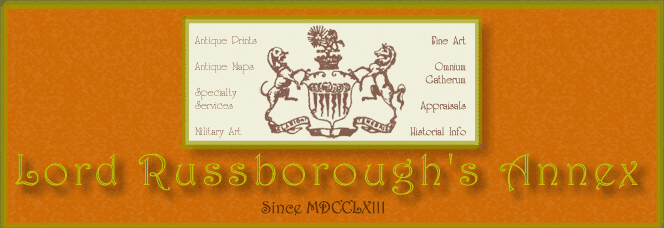This image has been referred to as probably the most famous of all historical paintings as it dramatically portrays the death of a hero in what has become an iconic pose. The event took place on the plain above the St. Lawrence river on the morning of Sept 13 1759. One of history's turning points, at least for the history of North America. The scene purportedly depicts the death of General Wolfe on the Plains of Abraham outside of Quebec city. The key battle of the Seven Years War (1756-63) as far as British America was concerned, as it determined that Britain would gain control over the vast lands then known as New France that later evolved into the fledging Canada.
Following an intensive artillery bombardment that reduced much of Quebec City to ruin. Together with, a vigorous scorched earth policy of the French settlements along a fifty mile stretch of the south shore of the St. Lawrence. Some 3,700 French troops & marines (+ 10,000 civilians) under Louis Joseph Marquis de Montcalm (1712-59), faced a army of some 4,000 British regulars, militia and marines, the latter having spirited the force up the river during the previous 12 hours of darkness, due to excellent planning and accurate maps.
The British forces were under the command of 32 year old Brigadier-General James Wolfe, who's health and popularity were rapidly failing, this was to be his final winner-take-all trow of the dice. Wolfe's daring tactics and professionally trained soldiers won the 15 minute battle. Wolfe died on the battlefield and Montcalm, who badly miscalculated his own actions, was mortally wounded and succumbed the following day. Beacons were lit across Britain and medals struck in celebration of victory. Wolfe,'the victor of Quebec', was given a hero's burial.
Twelve years later Benjamin West exhibited his monumental canvas at the Royal Academy. The painting depicts the iconic heroic death of Wolfe and the triumph of British imperialism 1771. It is also absurdly inaccurate.
The surgeon supposedly attending Wolfe was hundreds of miles away if in the country at all. Others appearing in the painting had other things to do on the field of battle other than attend a fallen officer. Key figures who were present do not appear at all. Those who despised Wolfe or refused to pay West's 'fee for inclusion' were simply not portrayed. Nevertheless the painting caused a sensation it was purchased by Lord Grosvenor to whom his print is dedicated, his descendent the Second Duke of Westminister presented the painting to Canada, in tribute to the role Canadians played in World War I, it now hangs in the National Gallery Ottawa. King George ordered West to make copies. One is now in the Royal Collection and another being acquired by Robert Moncton, brother of the general portrayed in the painting, it is now in the Royal Ontario Museum.
Benjamin West PRA. 1738 - 1820 was an Anglo-American painter of historical scenes in the later quarter of the 18th. Century. He was the second president of London's Royal Academy serving from 1792 to 1805 and 1806 to 1820. He was offered a knighthood by the British Crown, but declined it. From 1746 to 1759, West worked in Pennsylvania, mostly painting portraits. He studied under John Wollaston, who influenced West's technique. He was also a close friend of Benjamin Franklin. After study in Italy, West re-located to England where he became known as The American Raphael. He then received Royal Patronage which ensured his career. He painted his most famous, and possibly most influential painting, The Death of General Wolfe, in 1770, exhibited at the Royal Academy in 1771. Although originally snubbed by Sir Joshua Reynolds, and others as over ambitious, the painting became one of the most frequently reproduced images of the period. In 1806 he painted The Death of Nelson. West died at his house in Newman Street, London, on 11 March 1820, and was buried in St Paul's Cathedral.
William Woollett 1735 - 1785 was a leading 18th.cent. English engraver. He was born in Maidstone, into a family which originally came from the Netherlands.He was apprenticed to John Tinney, a London engraver, London, and studied in the St. Mary's Lane academy. His first important plate was from the "Niobe" of Richard Wilson, published by Boydell in 1761. After Benjamin West he engraved his fine plate of the "Battle of La Hogue" (1781), and "The Death of General Wolfe" (1776), which is usually considered Woollett's masterpiece. In 1775 he was appointed engraver-in-ordinary to George III; and he was a member of the Incorporated Society of Artists, of which for several years he acted as secretary. His works rank among the great productions of the English school of engraving.



